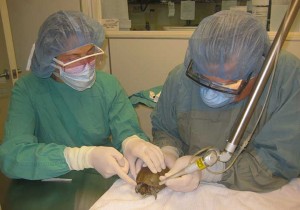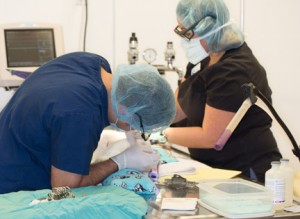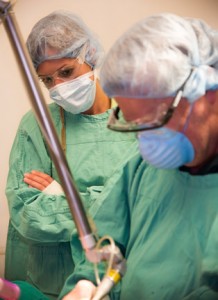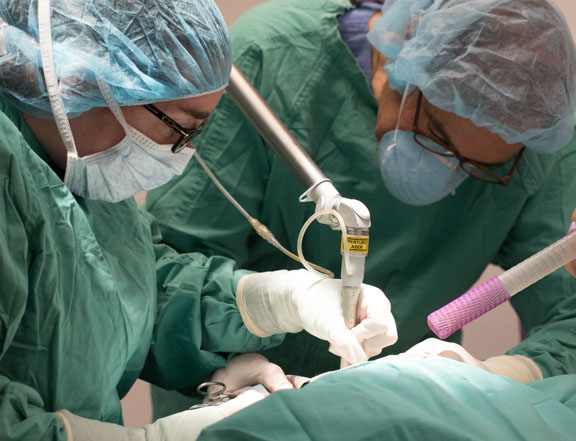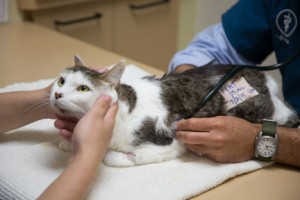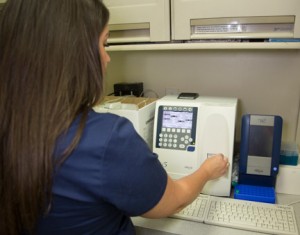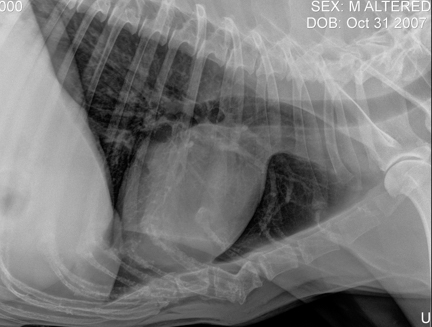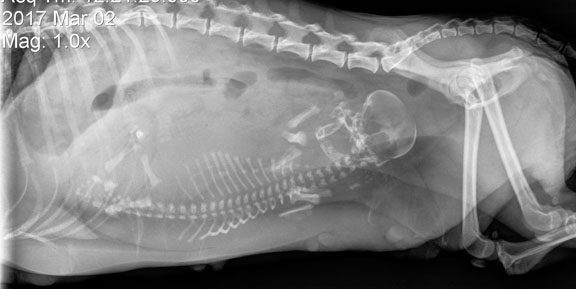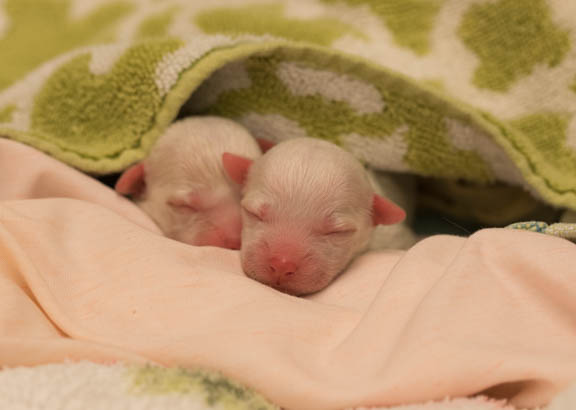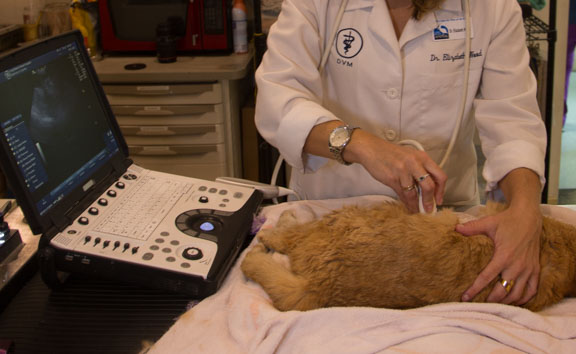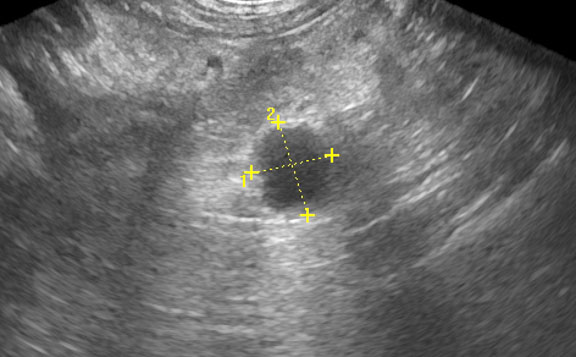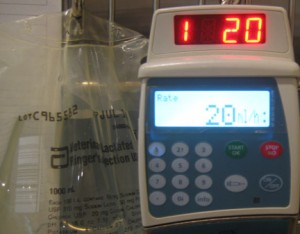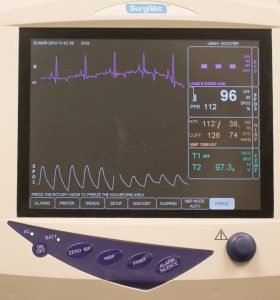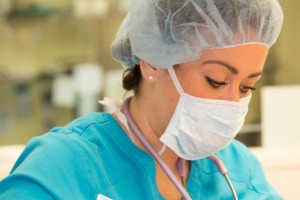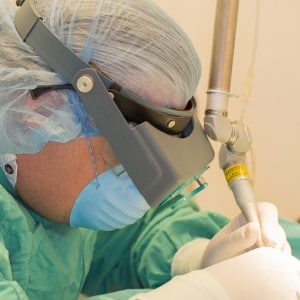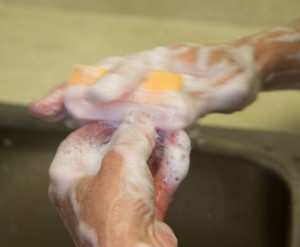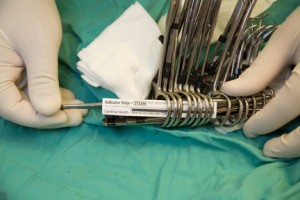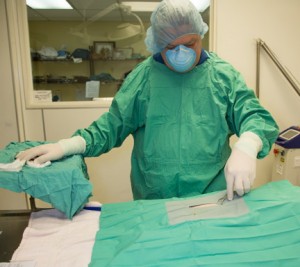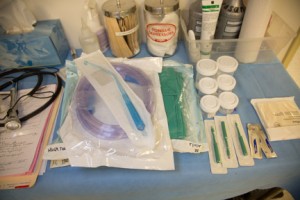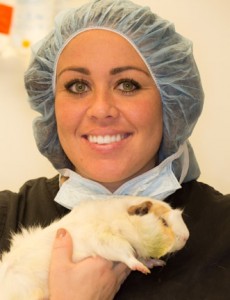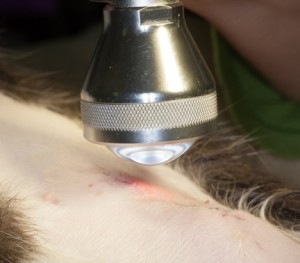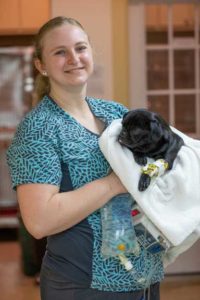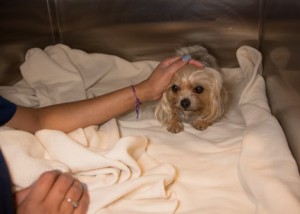The Long Beach Animal Hospital has been successfully and safely performing surgery on a wide variety of species for well over 25 years. It is the advancement in safe anesthetics and surgical monitoring equipment, along with the tremendous amount of knowledge gleaned over the decades, that has given us the ability to safely perform almost any surgery needed on a sick pet or wildlife.
A huge advance in surgery has been the use of laser. We have had our carbon dioxide laser for over 20 years.
The laser is being used in this tortoise to remove a tumor
A lot goes on in surgery, even before the surgery begins. In the photo below you can see some of the activity. Starting at the back left and going clockwise:
- Anesthetic monitor
- Anesthetic machine
- Anesthetist preparing for laser surgery wearing special glasses
- The purple tipped evacuator for the laser
- Two bottles of fluids
- A plastic container with sterile gauze used to disinfect the skin
- Yellow anesthetic monitoring sheet
- An open surgical pack that has been checked for sterility
- An assistant that is checking the pets temperature to determine if extra warm water bottles are needed
Training
We have two training programs. The primary one is when the new doctors get trained in specific procedures or protocols.
Dr. Meyers learning how to use the laser in an amputation of a cancerous leg
The second training program is for the externs. These are the veterinary school students that spend 1-2 months with us in training. If you go to our Facebook page (click on the FB link at the top right of any page) you will see their daily diary, which is a report of what they learned for the day.
Dr. P showing one of our students how to use the laser
Pre-anesthetic Examination
All our patients receive a complete exam from one of our doctors, usually at least several days prior to surgery. This gives us time to analyze a blood panel and prepare for any contingencies.
You can see this cat’s pain patch as it is being examined by Dr. P just prior to surgery
On the day of surgery we perform another exam just prior to giving anesthesia to make sure nothing has changed from our earlier exam. Its an extra safety measure.
Dr. R and Emily checking the heart
Pre-anesthetic Diagnostic Tests
We run blood panels prior to surgery to make sure the are no unnecessary anesthetic risks. If there is not enough time to send it out to our lab we can do it in-house.
We can get a report in 30 minutes with our analyzer
Radiographs of the chest, along withe EKG’s, might also be used in some patients to make sure they are ready for anesthesia. This usually involves geriatric patients or those with heart problems. We might also take a chest radiograph when doing a potential cancer surgery, making sure the cancer has not already spread to the lungs.
Radiographs of the abdomen are aso utilized, especially when a female is having a hard time having pups, and we are deciding if a C-Section is needed
These are the two pups in the radiograph after a C-Section
Ultrasound helps us plan the surgery because it can tell us which organ is involved and the size of the organ
Occasionally we need to do an ultrasound to look for spread of a tumor to the heart. This is important if we do a cancer surgery to remove a spleen that has hemangiosarcoma.
Anesthesia
This is a very important part of any surgery we do. It is so important, we have a complete page dedicated to it. Follow this link to learn all about anesthesia.
Surgical Preparation
Our patients receive IV (intravenous) fluids prior to surgery to minimize the risk of the anesthesia to important organs like the kidneys and liver
This same IV line is used to administer the anesthesia used for induction
Monitoring Equipment
During the procedure we are able to monitor many important physiologic parameters
Our anesthetists also use hands on techniques with instruments like the stethoscope to further monitor your pet
Surgical equipment
We have advanced surgical intsruments like the laser, being used here for cancer surgery
Surgery Preparation
Our procedures are performed sterile, starting with the doctor scrubbing his hands before surgery
Our instruments are sterilized with a special machine called an autoclave. The inside of the surgery pack has a sterility indicator to monitor if the pack has been properly sterilized before the procedure begins.
Surgery
We use sterile drapes, gowns, and masks for our surgeries. You can see the laser machine on the right
Sometimes extra instruments are needed for special procedures
Post Operative Care
Post operative care is just as important as the surgery.
Our staff closely monitors all of our patients during the procedure, and they are not taken back to hospitalization until they are stable
Our routine surgeries receive post operative companion laser treatment to minimize swelling, pain, and also to aid in healing
This dog’s surgery has been completed, its companion laser surgery has performed, its pain medication is in full effect, and now it is ready to be taken back to recovery
When back in their cages they are closely monitored and given lots of TLC!


